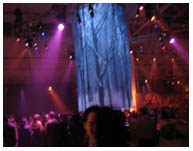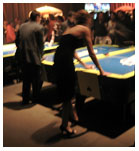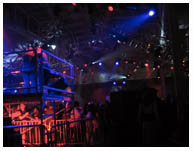Nowadays, it is rare that we experience anything truly first hand. I remember reading this sentiment somewhere, a long time ago. For example, how many of us have read about the ocean before setting foot on a beach? And sometimes I wonder, how much have I been missing out because of research, or even casual reading before a trip? Maybe one day I will embark on a trip to a virgin territory (for me) to get a "pure" experience, but I doubt it; the information is everywhere and it is hard to resist. I read quite a bit about Costa Rica before even booking my plan ticket. And here are a few facts I learned, that distinguish Costa Rica from just about any country in the world, not to mention its neighbour in notoriously chaotic Central America:
- Costa Rica has no army;
- Costa Ricans have a higher life expectancy than the people of the United States;
- Over 95% of Costa Ricans are literate;
- Costa Rica has approximately 5% of the world's known species -- in a country that is slightly smaller than West Virginia;
Well, I must say I am very impressed with the list. And the good words for the country are not limited to travel guide books (which tend to gloss over things). Even the often grumpy travel writer Paul Theroux had this to say about Costa Rica:
...If San Salvador were hosed down, all the shacks cleared and the people rehoused in tidy bungalows, the buildings painted, the stray dogs collared and fed, the children given shoes, the trash picked up in the parks, the soldiers pensioned off--there is no army in Costa Rica--and all the political prisoners released, those cities would, I think, begin to look a little like San José...Costa Rica is considered unique in Central America; prosperity has made it dull, but this is surely preferable to the excitements and urgenciesof poverty. What is remarkable is its secularity... It seemd indifferent toward religion. I guessed that it had something to do with politcal pluralism -- if that is the right phrase to describe the enlightened certainty that an election was rather more than a piece of fakery or an occasion to riot.
Though he praised the country, the lack of excitement and controversy did not suit Theroux's travel style. But to us common tourists, it sounds just about perfect. Before the trip, my mental picture (a very vague one) of Costa Rica is that of a green country populated with abundant wild life -- parrots and monkeys and the likes -- and some peaceful, prosperous people. Now that I am there and back, I cannot say this mental picture is that wrong. But even second-hand experiences have elements of surprise in them, after all, reading about a place is not the same as being there. So I will recount the trip as we (or more accurately, I) experienced it.
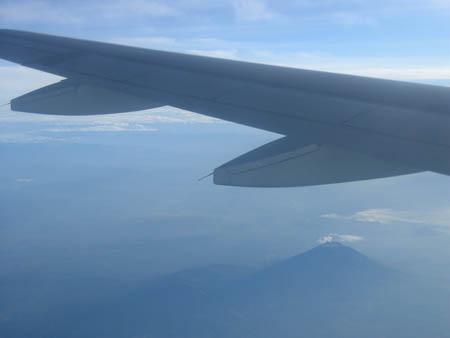 We are taking a red-eye flight from LAX, and the beginning of the trip has a hint of chaos -- it is near midnight, but there are quite a few long line-ups at the TACA counter --everyone seems to be on his way to Central/South America; then at the security counter, hundreds of people (half Latino looking, half tourists) have to wade through the only open security gate. Everyone was patient and good-natured, but it feels a bit bizarre to me: after all, we are still in a major U.S. airport. The flight itself is eventless enough, and early in the morning we spot our first volcano from the air -- one of famous chain of volcanos of Central America. After the glimpse, we fly mostly in the clouds, and we descended into San Jose under a steely gray sky. At the airport, our expected pick-up did not arrive, but with the help (not un-rewarded) of some local operators we were deposited at our hotel without much hassel, and I was thrilled to have a mini conversation with the driver, in my extremely limited Spanish -- that I could understand anything at all was a minor miracle to me.
We are taking a red-eye flight from LAX, and the beginning of the trip has a hint of chaos -- it is near midnight, but there are quite a few long line-ups at the TACA counter --everyone seems to be on his way to Central/South America; then at the security counter, hundreds of people (half Latino looking, half tourists) have to wade through the only open security gate. Everyone was patient and good-natured, but it feels a bit bizarre to me: after all, we are still in a major U.S. airport. The flight itself is eventless enough, and early in the morning we spot our first volcano from the air -- one of famous chain of volcanos of Central America. After the glimpse, we fly mostly in the clouds, and we descended into San Jose under a steely gray sky. At the airport, our expected pick-up did not arrive, but with the help (not un-rewarded) of some local operators we were deposited at our hotel without much hassel, and I was thrilled to have a mini conversation with the driver, in my extremely limited Spanish -- that I could understand anything at all was a minor miracle to me.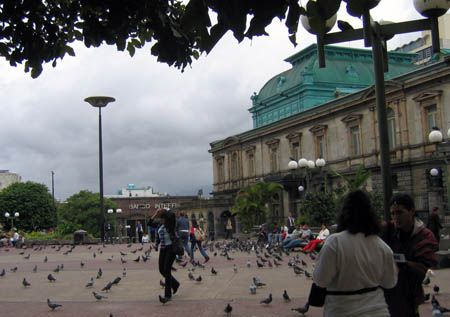 Our hotel is located in San Rafael de Escazú, "an affluent suburb" of San José, the capital. We are in the central valley of the country, ringed by green mountains. From what I read, Escazú is an expats' conclave, and it looks it -- there are strip malls populated with wine shops and sushi bars, and frou-frou looking boutiques, although nothing looks fancy or glitzy. After breakfast and a little rest we set off for the city, and I am somewhat taken aback when the cab deposits us downtown, right in front of the national theatre. The theatre, which according to my guidebook is the most impressive public building in San José, is not nearly as grand as I imagined, and the downtown itself looks rather non-descript and somewhat run-down. The city looks ... what is the right word for it...provincial. Somehow I had the funny notion that San José would be more cosmopolitan looking. Was I really expecting to see a Latino version of Toronto here?
Our hotel is located in San Rafael de Escazú, "an affluent suburb" of San José, the capital. We are in the central valley of the country, ringed by green mountains. From what I read, Escazú is an expats' conclave, and it looks it -- there are strip malls populated with wine shops and sushi bars, and frou-frou looking boutiques, although nothing looks fancy or glitzy. After breakfast and a little rest we set off for the city, and I am somewhat taken aback when the cab deposits us downtown, right in front of the national theatre. The theatre, which according to my guidebook is the most impressive public building in San José, is not nearly as grand as I imagined, and the downtown itself looks rather non-descript and somewhat run-down. The city looks ... what is the right word for it...provincial. Somehow I had the funny notion that San José would be more cosmopolitan looking. Was I really expecting to see a Latino version of Toronto here?Though not an attractive city, it is not dirty or chaotic -- not super tidy, but clean and orderly enough. It is, after all, not a touristy place, just the capital of a small nation (of less than 4 million people), where people are living about their lives: working, shopping, eating lunch... We can tell that there is a sizable middle class here -- there was little sign of either the very rich or the poverty stricken.
We visit two museums and a market. At the handicraft market, leather and wood objects line the aisles. The stall owneres are a polite bunch, not at all aggressive with soliciting business, and there is not much haggling going on, unlike markets elsewhere (China and Mexico come to mind). The Jade Museum has the world's largest collection of American Jade -- it is certainly interesting to see a culture other than China that held Jade in prestige -- and its 11th floor location on one of the few tall buildings in the city provides a bird's eye view of San Jose. The Pre-Columbian Gold Museum is housed in a bank vault underground and has a collection of, well, gold objects made before Columbus arrived. I must admit that museums are not really my thing, and jetlag is catching up with us. So we return to our hotel in the suburb.
Some confusion awaits us at the hotel. Our travel agent (who visited us earlier in the morning) has sent us a set of vouchers for the rest of our trip, but the vouchers do not specify the itinery we discussed. It takes several phone calls to straighten this out -- this is after all a foreign country where English is not a first language.
The next morning we set off to Volcán Arenal, the most active volcano in the country. Our transportation is a tourist bus line named "Interbus" -- little shuttles that ferry tourists around the whole country. It is actually a very nice system -- they pick you up from your hotel in San Jose in the morning, and 3 hours later drops you off at your hotel in Arenal, no need to worry about driving -- which often involves swerving around the many potholes on the roads. The road to Arenal traverses a hilly green countryside and rustic towns, passing papaya and banana groves. It drizzles the whole way and starts to pour just as we get near the volcano.
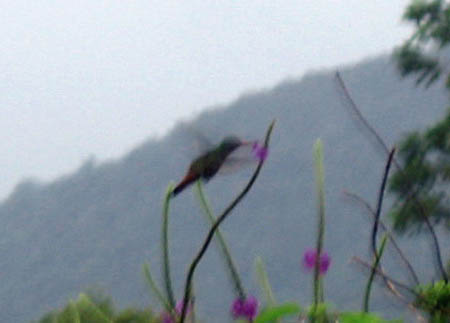 Our room has a front row view of the volcano! Although at the moment the volcano is not showing its face. It is the tail end of the rainy season, which means our chance of seeing it is slim. Even in the dry season the vocano is often shrouded in clouds, and the hotels all have this "volcano-alert" list that guest can sign on, to authorize a wake-up call in the night, in case the volcano shows its face. However, I am happy just to sit in the patio and watch something just as interesting -- there are so many colorful and delicate hummingbirds buzzing around our backyard! Such fascinating creatures! From time to time some other exotic looking birds pass by as well, notably one big bird with a huge brightly-colored beak -- that is my first glimpse of a toucan!
Our room has a front row view of the volcano! Although at the moment the volcano is not showing its face. It is the tail end of the rainy season, which means our chance of seeing it is slim. Even in the dry season the vocano is often shrouded in clouds, and the hotels all have this "volcano-alert" list that guest can sign on, to authorize a wake-up call in the night, in case the volcano shows its face. However, I am happy just to sit in the patio and watch something just as interesting -- there are so many colorful and delicate hummingbirds buzzing around our backyard! Such fascinating creatures! From time to time some other exotic looking birds pass by as well, notably one big bird with a huge brightly-colored beak -- that is my first glimpse of a toucan! 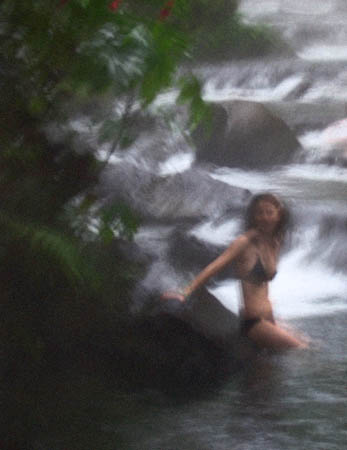 The rain turns to drizzle and then turns to downpour, and then drizzle again. Late in the afternoon we decide to go to the famed Tabacón Hotsprings, rain or not, we are getting wet anyways. We wish we had come earlier! I have read much raving about the hotsprings, of its lush grounds, its oppulent settings, its caves and pools and waterfalls... and everything turns out to be as amazing as promised. I am normally not a big fan of hotsprings, but Tabacón instantly turns me into a fan. Matthew, who is normally into any hotspring, is in seventh heaven. We could spend days at this place! A wonderful massage in the soothing sound of the rain, and a tasty buffet dinner afterwards completes the excursion in paradise.
The rain turns to drizzle and then turns to downpour, and then drizzle again. Late in the afternoon we decide to go to the famed Tabacón Hotsprings, rain or not, we are getting wet anyways. We wish we had come earlier! I have read much raving about the hotsprings, of its lush grounds, its oppulent settings, its caves and pools and waterfalls... and everything turns out to be as amazing as promised. I am normally not a big fan of hotsprings, but Tabacón instantly turns me into a fan. Matthew, who is normally into any hotspring, is in seventh heaven. We could spend days at this place! A wonderful massage in the soothing sound of the rain, and a tasty buffet dinner afterwards completes the excursion in paradise.View all San José and Arenal pictures.
 Costa Rica Trip: 2. Central valley to hot springs
Costa Rica Trip: 2. Central valley to hot springs  We spend the night in a motel near the entrance to the park then rise bright and early the next morning to meet the trees. Driving up the mountain, we soon rise above the clouds -- the sequoias are pretty picky about where they live, which is only on the west slope of the Sierra Nevada. There are some pretty fall colors, always a pleasant surprise in California, though they are not to be compared with the brilliant display of maples trees out east.
We spend the night in a motel near the entrance to the park then rise bright and early the next morning to meet the trees. Driving up the mountain, we soon rise above the clouds -- the sequoias are pretty picky about where they live, which is only on the west slope of the Sierra Nevada. There are some pretty fall colors, always a pleasant surprise in California, though they are not to be compared with the brilliant display of maples trees out east.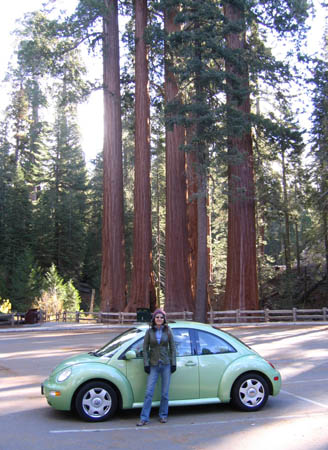 It is cold up here at 6000 feet! I need my gloves and winter hat as well as 3 layers of clothing (See picture on left: me bundled up and our Beetle looking adorable in front of some medium sized trees by the parking lot.). At the visiter center we learn that sequoias are not the tallest of all trees (the coastal redwoods claimed that title), nor are they the fattest (the Montezuma cypress got that one). But they are the largest by volume (i.e., tall AND fat). In the park reside two of the largest of the giants -- General Sherman tree and General Grant tree (why are they both named after generals?) -- ranking as #1 and #3 respectively. In case you were wondering what names the park service chooses for trees these days, don't worry, they have stopped the tradition of naming trees.
It is cold up here at 6000 feet! I need my gloves and winter hat as well as 3 layers of clothing (See picture on left: me bundled up and our Beetle looking adorable in front of some medium sized trees by the parking lot.). At the visiter center we learn that sequoias are not the tallest of all trees (the coastal redwoods claimed that title), nor are they the fattest (the Montezuma cypress got that one). But they are the largest by volume (i.e., tall AND fat). In the park reside two of the largest of the giants -- General Sherman tree and General Grant tree (why are they both named after generals?) -- ranking as #1 and #3 respectively. In case you were wondering what names the park service chooses for trees these days, don't worry, they have stopped the tradition of naming trees.
 Never mind these super giants, any average mature sequoia is impressive enough, though it is difficult to appreciate their size without a point of reference -- since they are all huge, it is hard to tell just how big they are by looking just at them. To begin to grasp their immensity you need to put a human in front of it -- a human looks absolutely puny, no, worse than puny, a human is miniscule.
Never mind these super giants, any average mature sequoia is impressive enough, though it is difficult to appreciate their size without a point of reference -- since they are all huge, it is hard to tell just how big they are by looking just at them. To begin to grasp their immensity you need to put a human in front of it -- a human looks absolutely puny, no, worse than puny, a human is miniscule. To be sure, even among the giants, General Sherman stands out. It has a mind-boggling volume of 52.500 cubic feet (1486.6 meters). At its base, the diameter reaches 18 feet, which makes the area it covers larger than our apartment! I still have problem believing this as I am typing this, sitting here in the apartment -- it's certainly not a mansion, but still seems big enough. On top of that there is 274 feet of more bulk.
To be sure, even among the giants, General Sherman stands out. It has a mind-boggling volume of 52.500 cubic feet (1486.6 meters). At its base, the diameter reaches 18 feet, which makes the area it covers larger than our apartment! I still have problem believing this as I am typing this, sitting here in the apartment -- it's certainly not a mansion, but still seems big enough. On top of that there is 274 feet of more bulk. 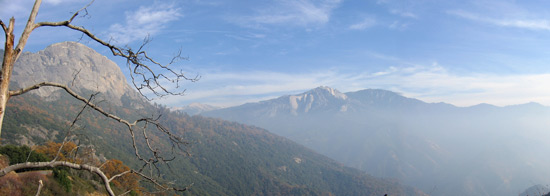
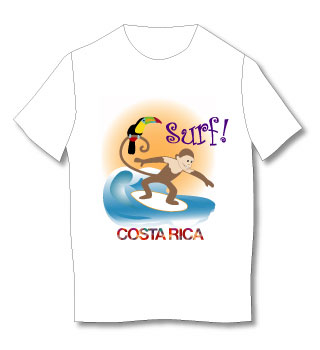 Yes, it's been a while -- I was in L.A., and Costa Rica, and then back home catching up on piles of homework. Now I'm finally back on Zongs blog, and ready to recount my travels (whether you are ready to read or not).
Yes, it's been a while -- I was in L.A., and Costa Rica, and then back home catching up on piles of homework. Now I'm finally back on Zongs blog, and ready to recount my travels (whether you are ready to read or not). 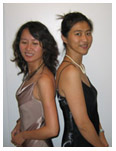 Another recent event worth some recounting: I attended a holiday party hosted by one famous Bay Area company. For someone who had not partied for years, it was a treat. Here we are, all dressed up and ready to party! (Our beautiful dresses turned out to be a bit chilly though -- they definitely did not heat the place up enough!)
Another recent event worth some recounting: I attended a holiday party hosted by one famous Bay Area company. For someone who had not partied for years, it was a treat. Here we are, all dressed up and ready to party! (Our beautiful dresses turned out to be a bit chilly though -- they definitely did not heat the place up enough!)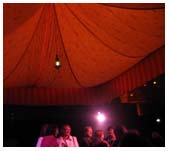
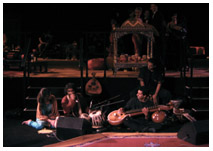
 The venue was divided into several pavilions, each decorated with a different country/city theme. The Indian pavilion was set up as a giant tent, where (naturally) Indian food was served, and Indian musicians and dancers performed.
The venue was divided into several pavilions, each decorated with a different country/city theme. The Indian pavilion was set up as a giant tent, where (naturally) Indian food was served, and Indian musicians and dancers performed. 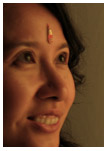 An exotic ornament placed between the eyebrows made every girl feel glamorous. I wish I had a sari...
An exotic ornament placed between the eyebrows made every girl feel glamorous. I wish I had a sari...